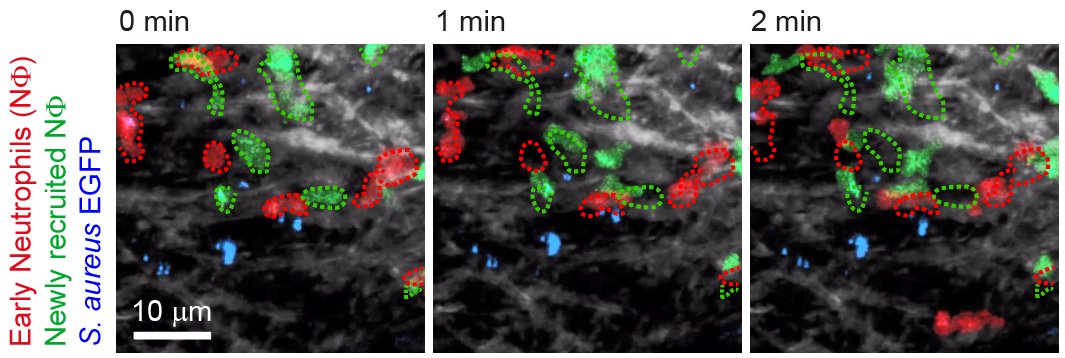How do the pro- and anti-inflammatory functions of myeloid cells influence the course of an immune response?
Myeloid cells such as monocytes or neutrophilic granulocytes fight infections via phagocytic functions or the productions of substances harmful to the pathogen. However, some of their functions are also anti-inflammatory and prevent an "overshooting" of the immune response that would be harmful to the body. Using fluorescence reporter systems for cell activation and light-modifiable labels, we can track myeloid cells after arrival in inflamed tissue. This allows for studying their function using, for example, intravital 2-photon microscopy, but also flow cytometry or RNA sequencing, and elucidating the role of different subtypes of myeloid cells in disease development.

Light-dependent highlighting in the tissue permits the time-dependent tracking and characterization of neutrophils dependently of their arrival time at the site of S. aureus (blue) infection.
Dashed lines show the initial position of the neutrophils, indicating their rapid movement. The cells can also be tracked beyond the infected skin, and could be shown to be drained to the lymph nodes during infection. (Prat-Luri et al., Cell Rep. 2022 May 3;39(5):110777.)






